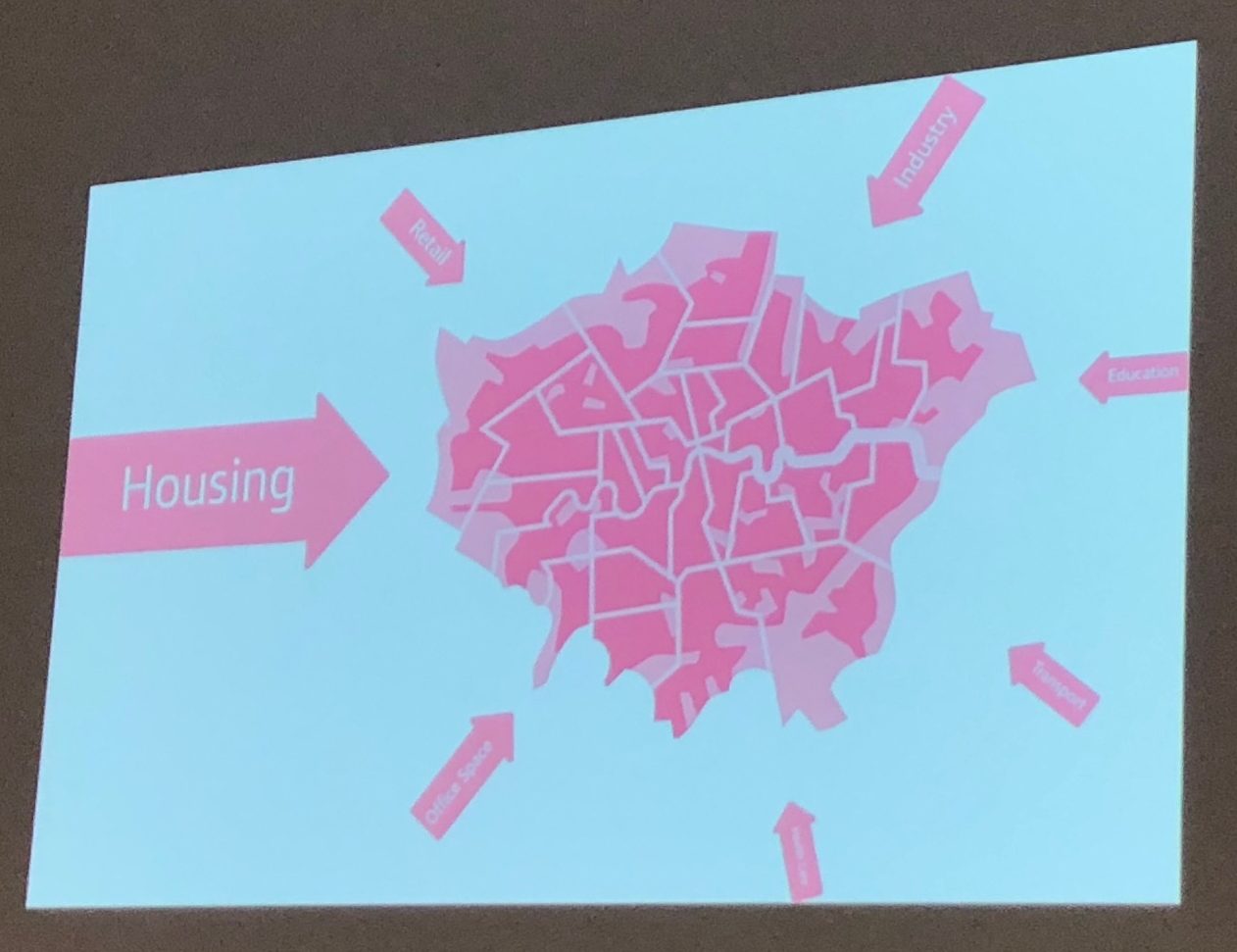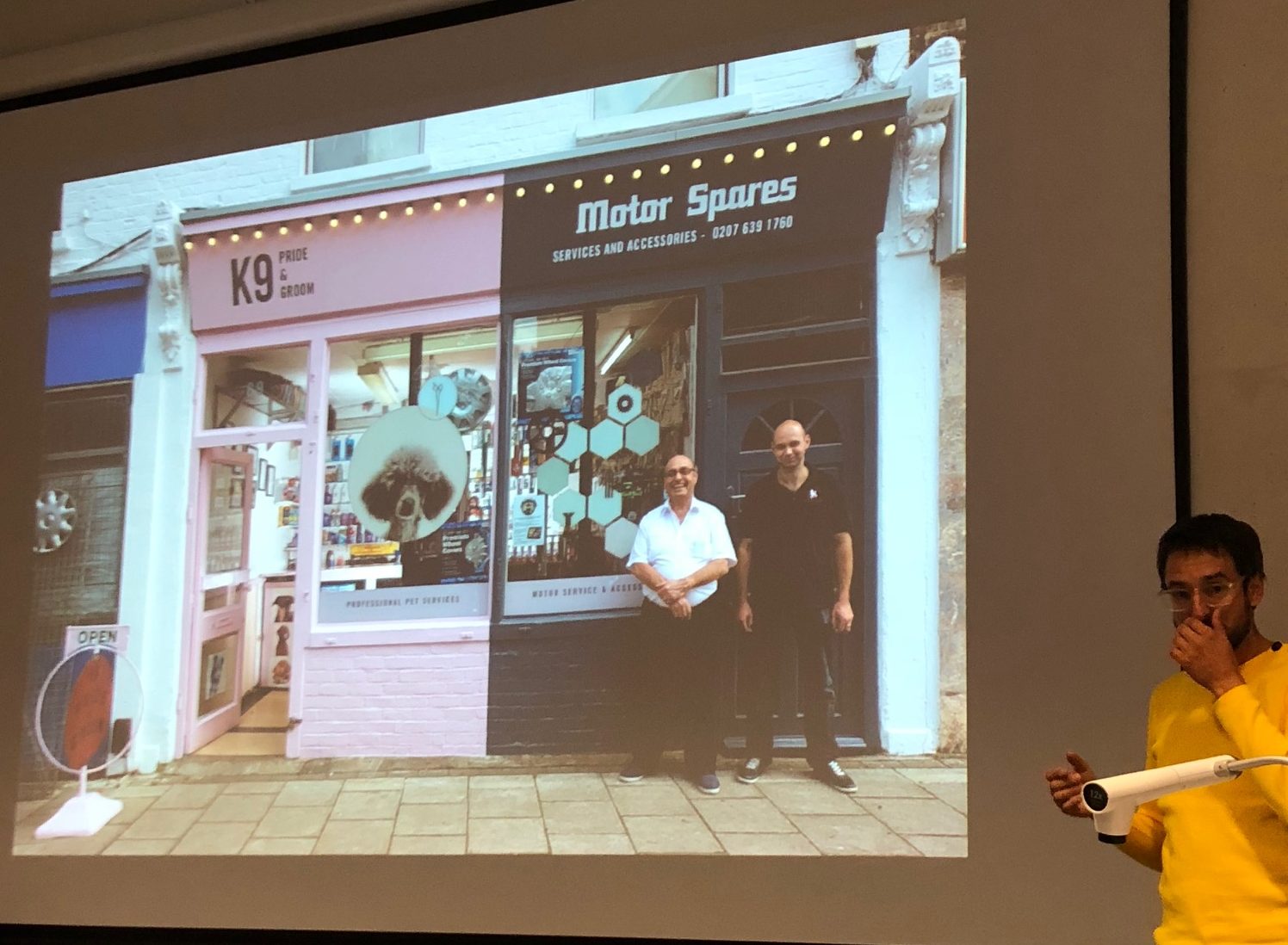Post
REPORT | Saturday Morning Planning School
30 Oct 2018
For the second year, the London Society ran a series of five interconnected talks on Saturday mornings in a 'Planning School'. This year's were held in association with The Sir John Cass Faculty of Art, Architecture & Design (CASS), London Metropolitan University ('The Cass'), to whom many thanks.
Darryl Chen, who leads the urban design studio at Hawkins\Brown, and who worked on the structure of this year's school, reports on the five sessions.
'Planning-tainment’ is too trivial a way of describing why fifty keen people spent a series of Saturday mornings in a windowless lecture theatre at the end of a long summer. But prove it did beyond a shadow of doubt that 1) planning is actually a popular topic and 2) a stellar cast of practitioners could engage audiences with information and wit.
This was the conceit of 2018’s Planning School: A series of mini lectures that challenged a wide audience of interested people, concerned citizens, architects and planners alike. Each week featured two speakers giving a double act of different perspectives on the same topic. Fewer than half the speakers were actually professional planners, but all actively engage with the planning system to shape our city’s places. Perhaps that is an apt description of the breadth of characters who are involved in this beautiful lumpen beast we call planning.
We set out to present pointy discussion points and practical case studies. This was no traditional course diligently plodding through the eras, nor ticking off with curriculum-satisfying glee the numerous mechanisms the planning process comprises. We instead presented potted highlights from the scale of the plot to the city, and along the way met some of the actors, jargon, frustrations, success stories and deep ideological issues faced at each turn.
Dr David Knight fittingly kicked off the series with a picture of a planning system that is failing to communicate clearly. The not-so shocking revelation that far more people get knowledge from peer-based online forums like Mumsnet and Pistonheads provided a challenge for planners to communicate clearly. Guy Rochez followed with Croydon’s pastel-coloured manifesto of suburban intensification, demonstrating an effective way of communicating a new policy that has sneakily radical intent.
Dr Jan Kattein and David Barrie explored the ways that people can get involved in neighbourhood initiatives. They told us some truly inspiring stories of high streets reinvigorated and communities brought together, intriguingly by the actions of David a former TV producer and now venture capitalist, and Jan who acts as much as a facilitator and entrepreneur as a designer. Key take away: leveraging the social capital of local people and businesses is a sure way of making places better.
An interlude on high-density housing from Claire Bennie and Lorraine Hughes attracted the biggest audience of the season. Claire started the session with a demystification of housing density and a plea for a reasoned approach to residential design. Lorraine then presented Wood Wharf as a decades-in-the-making development that acted as a proxy for London’s ‘new normal’ in the lively debate that ensued.
The borough scale was slightly sidestepped in week four for a broader discussion about the role of the local authority planner. Dr Jess Ferm questioned how effective borough planning has been in keeping up with the pace of change, while Patricia Brown brought the perspective of one who has brought about change through connecting influential people and advocating strategic projects.
The final week was a tale of the tortoise and the hare (with apologies to Mark Bearley, Euan Mills and Aesop). Euan set off at appropriately lightning speed to present a vision of urban life that is now transforming rapidly through new applications of technologies. His initiative at the Future Cities Catapult represents a movement towards reforming planning in light of these changes. Mark then ended the series with a measured polemic on how London is being allowed to ‘eat itself’ through the encroachment of residential development at the expense of space for industrial uses. He took the perspective of recent history comparing the current need to protect industrial land to the identified need to protect green open space in the 1990s and 2000s, and wondered whether we as a city will again rise to the challenge. Fittingly it was a big picture view on planning that ended the series; doubly fitting was the approach to ‘value the past while thinking about the future’ that lies at the core of the London Society’s mission.


